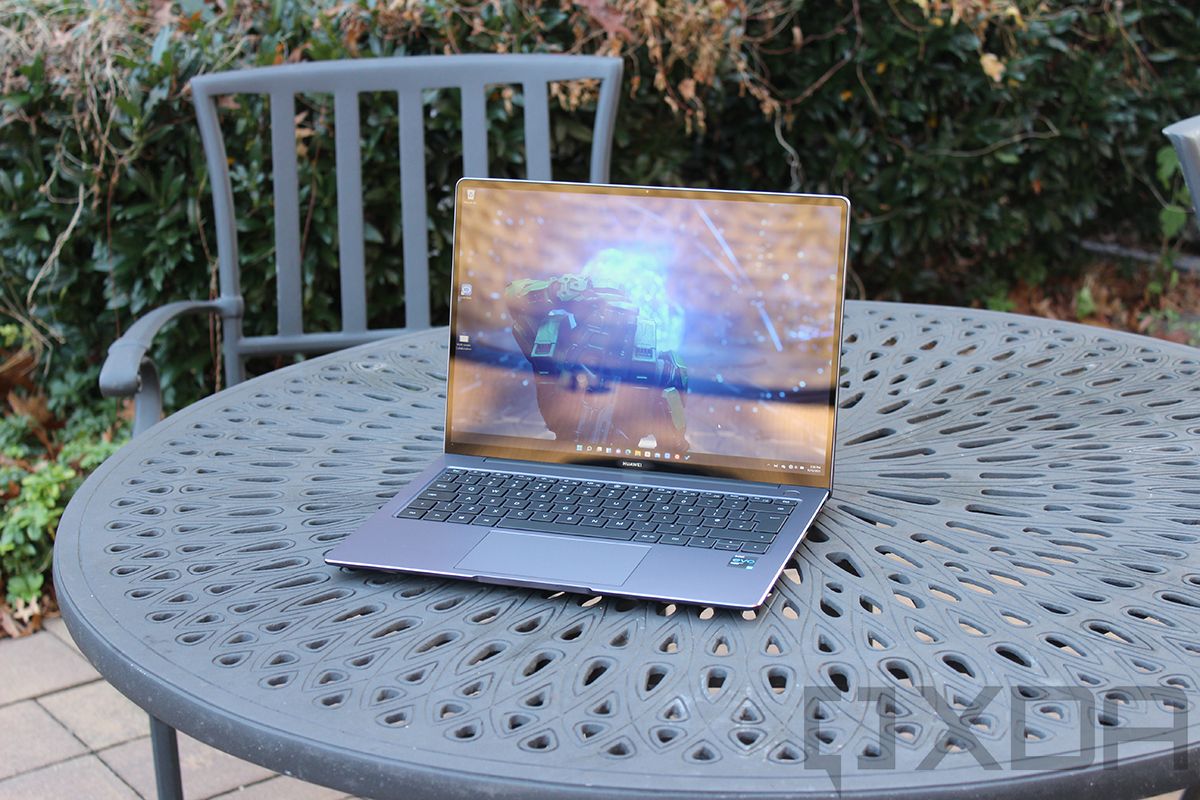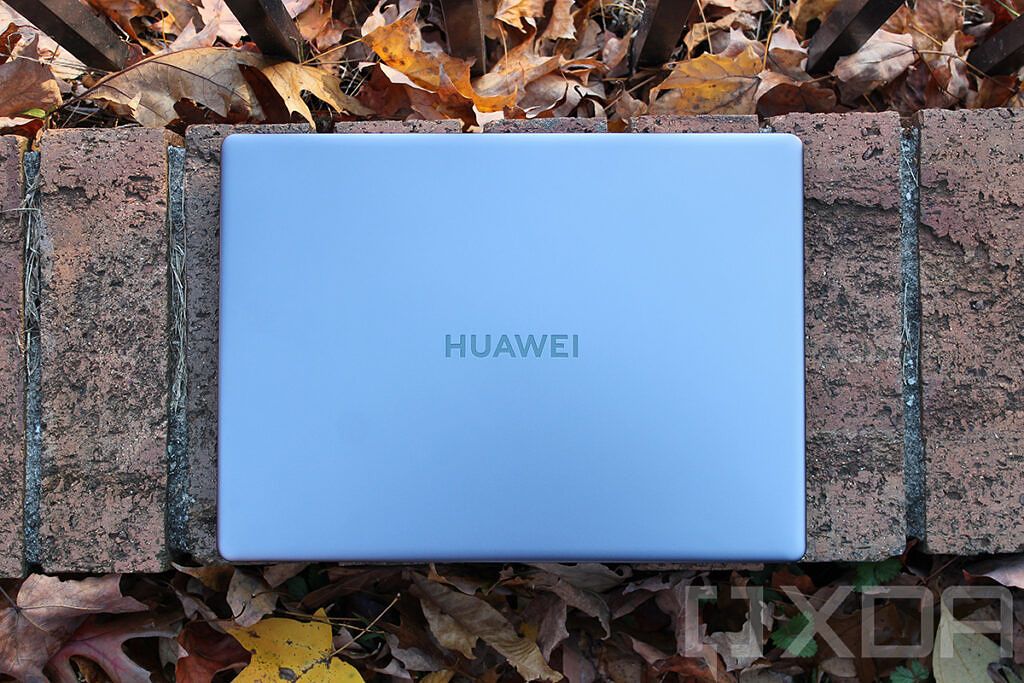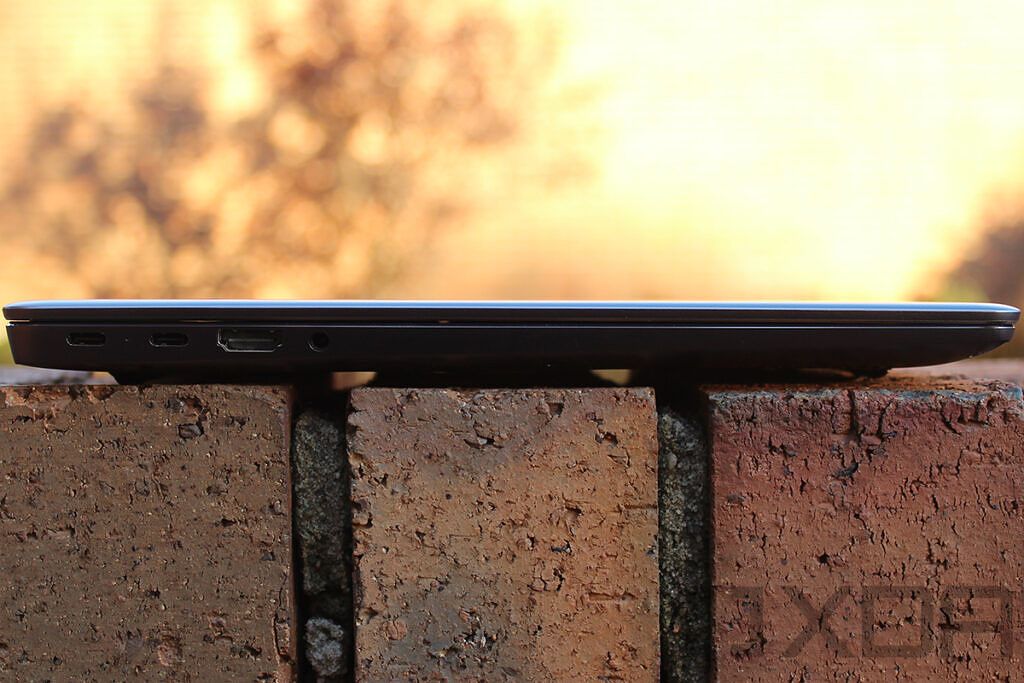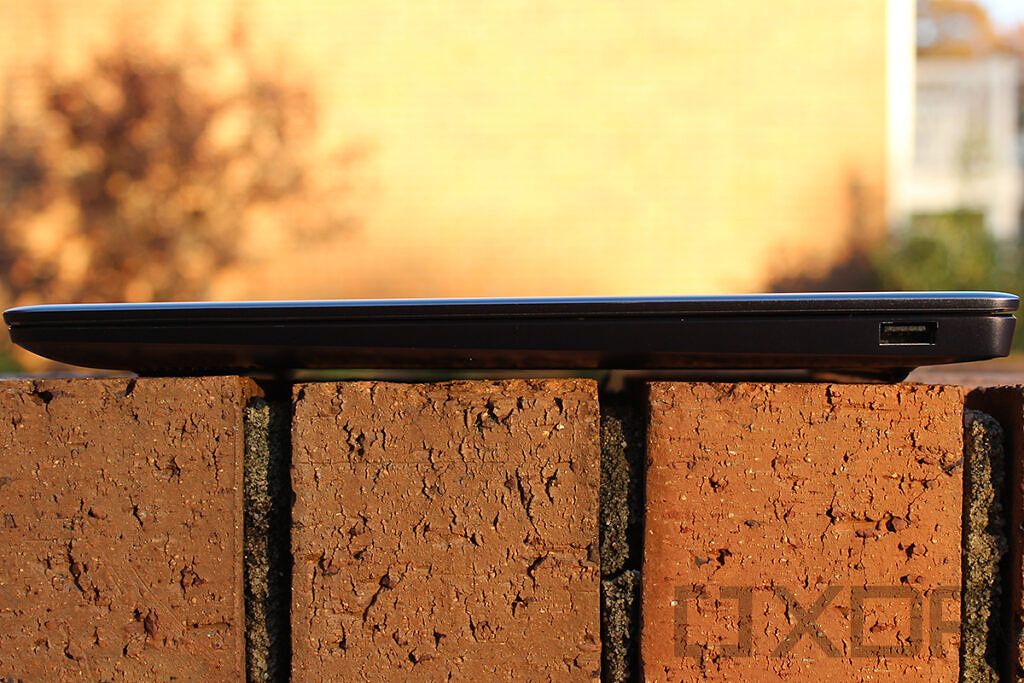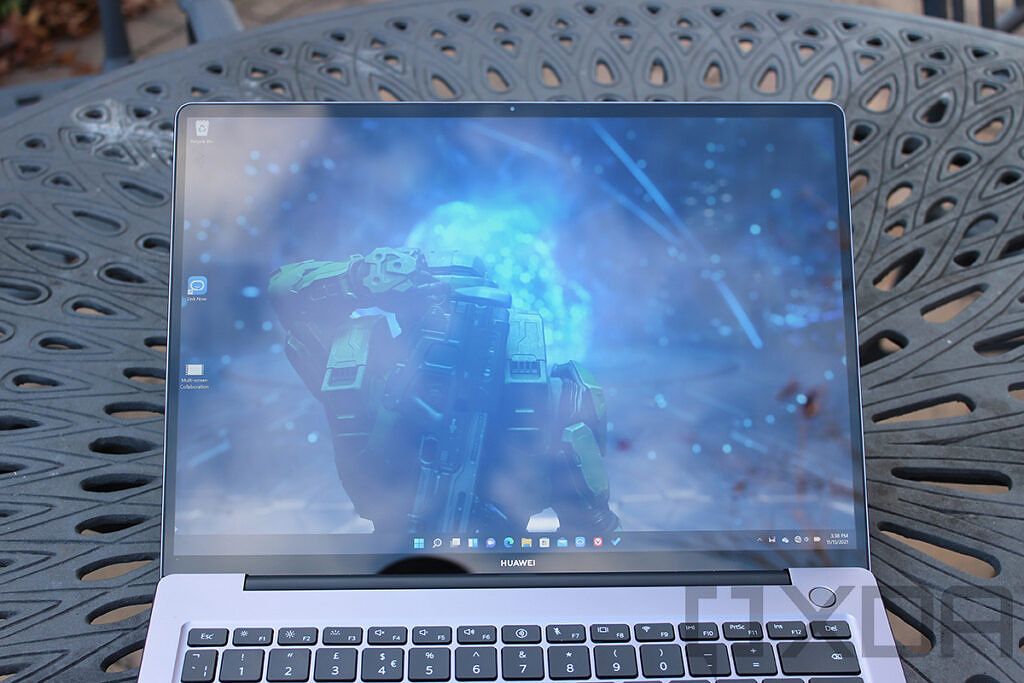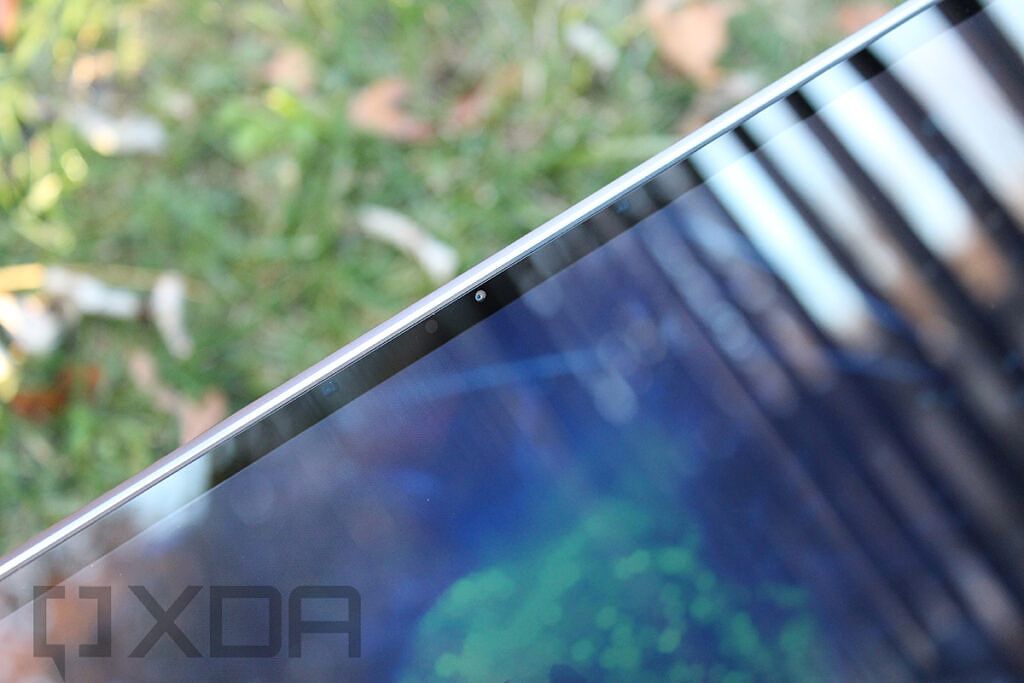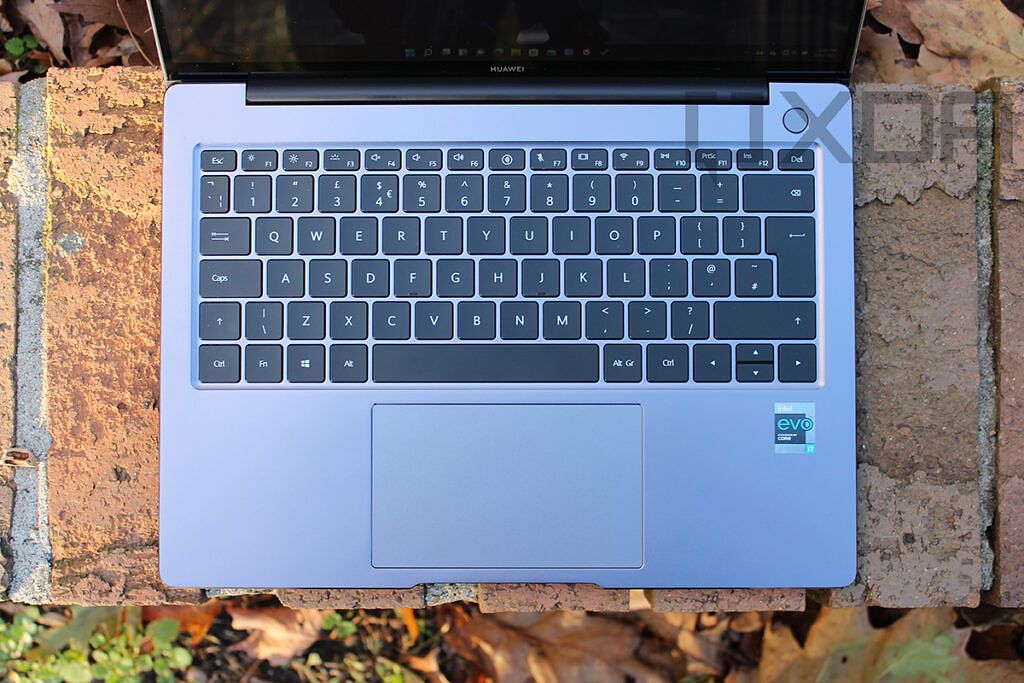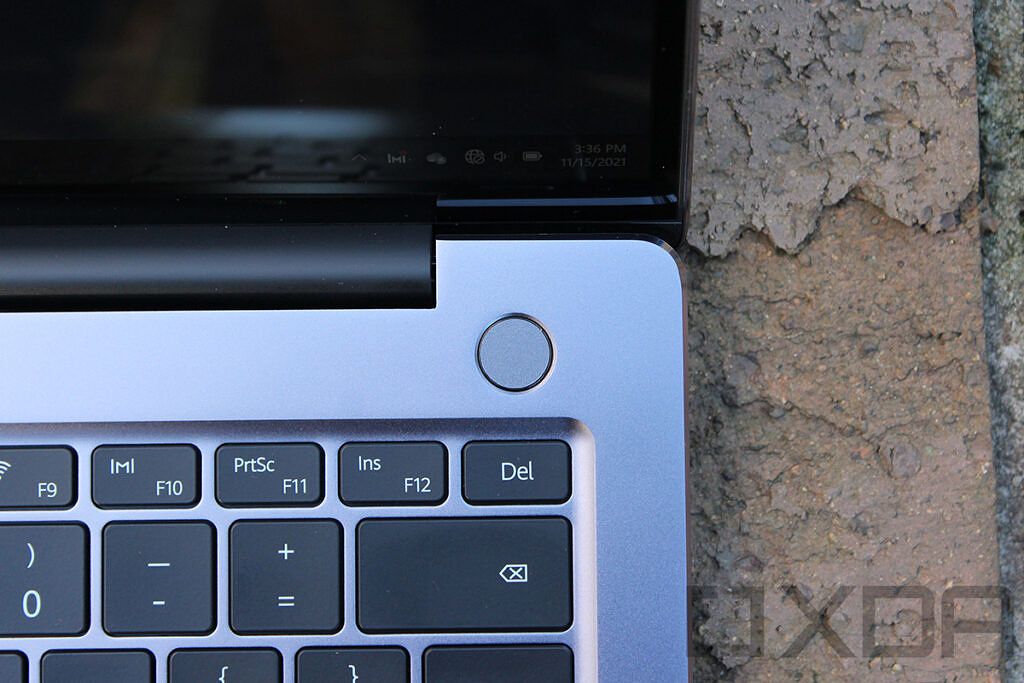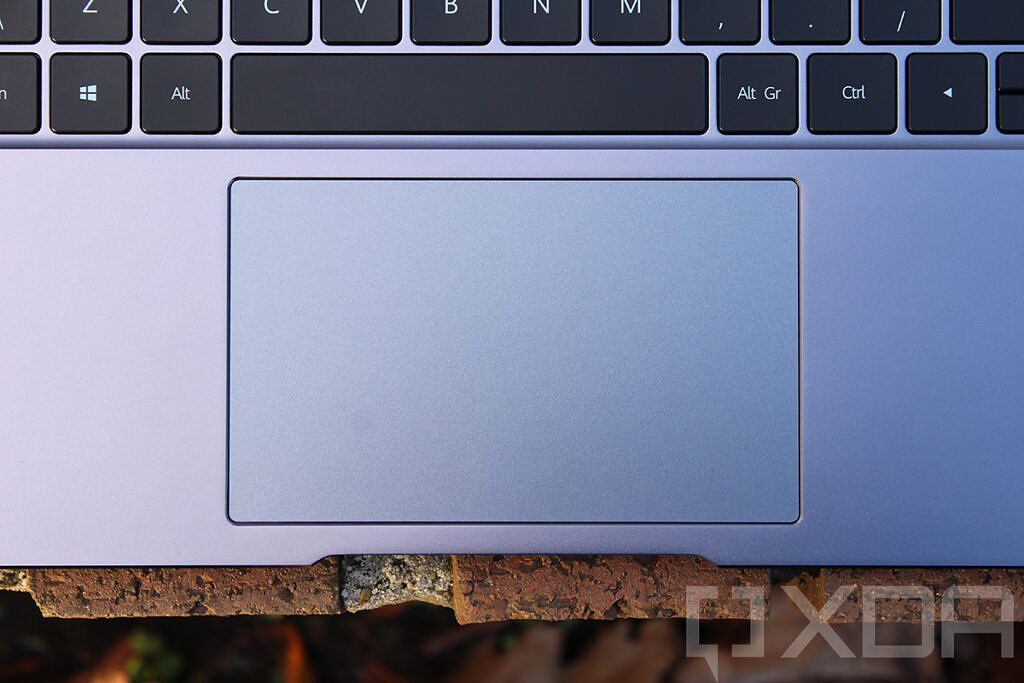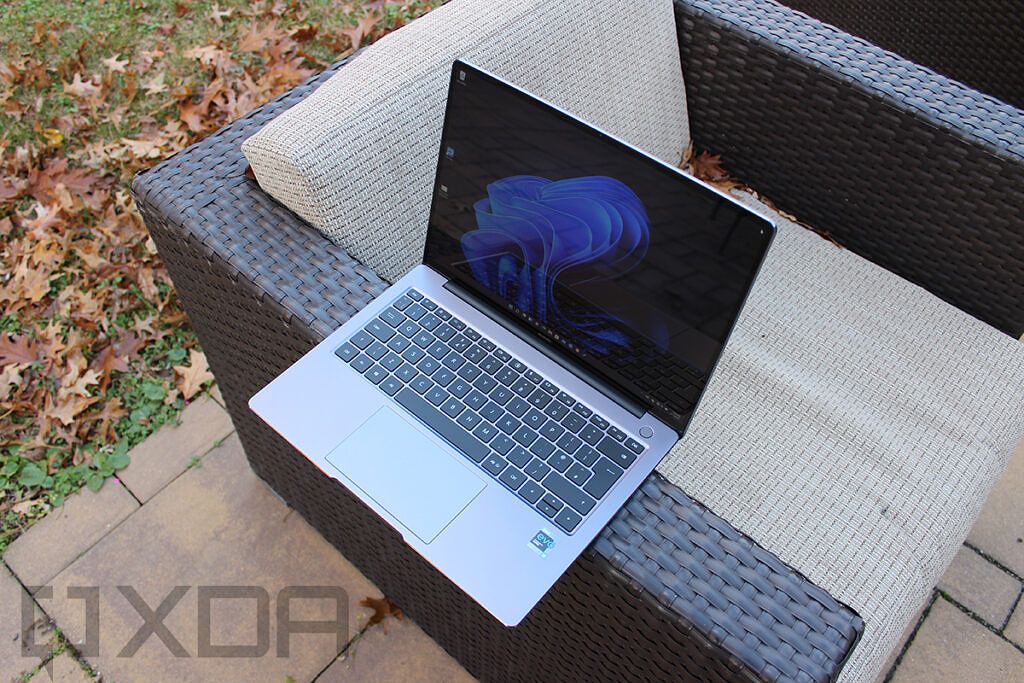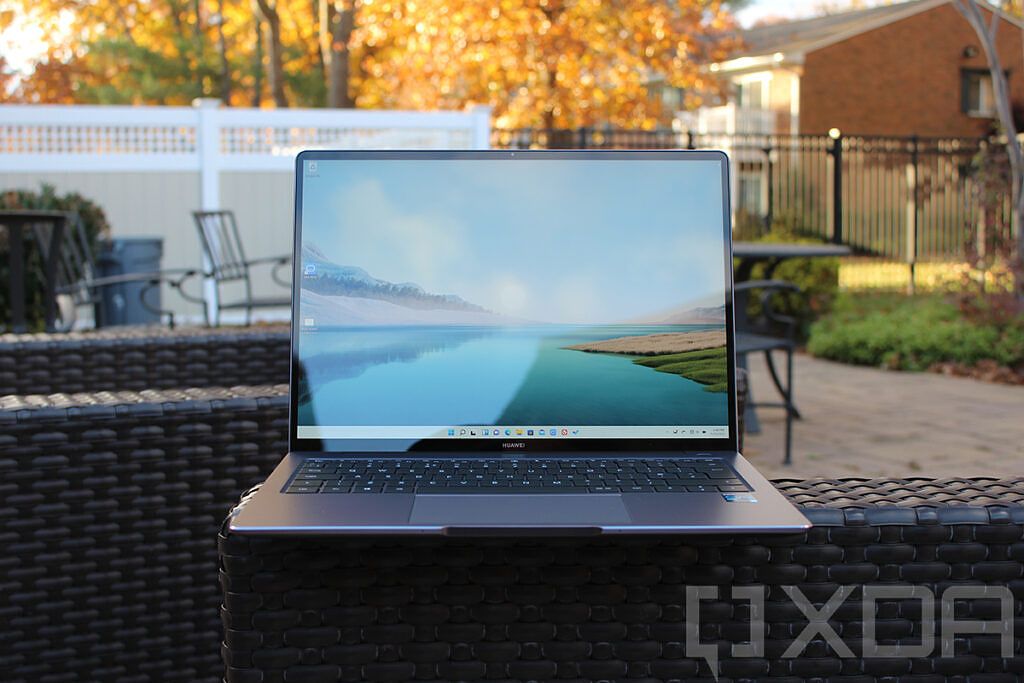Huawei has a history of making some really great laptops. It was the first to put Dolby Atmos audio in a 13-inch laptop with the MateBook X, and it's always pushed for high screen-to-body ratios, quality keyboards, and more. The Huawei MateBook 14 is one of the first to ship with Windows 11, and it comes with some of the features that we're seeing a lot with the latest generation of laptops.
Most notably, it has a 90Hz display, making for a much smoother experience than most other laptops on the market today, which have 60Hz screens. It's also got Intel's Tiger Lake H35 processors, and for productivity performance, it's pretty great (we'll talk later about the implications of a powerful processor without a dedicated GPU). First of all, it has the features that are unique to Huawei laptops, such as Huawei Share that lets you tap your Huawei phone against it and instantly share photos and videos, or easily extend your screen to other Huawei devices wirelessly.
Navigate this review:
- Design: The MateBook 14s looks like a Huawei laptop, but there’s only one Thunderbolt port and it’s optional
- Display: The 90Hz 14.2-inch screen is beautiful
- Keyboard: The Huawei MateBook 14s has 1.5mm keys, a fingerprint sensor, and more
- Huawei Share
- Performance and battery life: The Huawei MateBook 14s has a 35W CPU, but no dedicated GPU
- Conclusion: Should you buy the Huawei MateBook 14s?
Design: The MateBook 14s looks like a Huawei laptop, but there's only one Thunderbolt port and it's optional
I've reviewed a whole bunch of Huawei laptops, going right back to the original MateBook that launched in 2016. They all share a common design, and probably the biggest difference has been the shift from the petal logo to the text Huawei logo that's stamped in the hood. They're pretty much all made out of aluminum, and the base color for this one is called Space Gray.
It also comes in Spruce Green, which I'm a little jealous about. Obviously, neutral colors like gray and silver tend to be popular in laptops, just like black is popular with phones. As a reviewer that uses lots of devices, I like things that stand out from the rest.
Unfortunately, that other color option is where I start to stumble on one of my biggest issues with the MateBook 14s: the lack, or somewhat lack of Thunderbolt. Here's the deal on this. In order to get Thunderbolt, you have to purchase the model with a Core i7, 16GB RAM, and 1TB storage, and as far as I can tell, that's only available in the Space Gray configuration.
With the MateBook 14s, Thunderbolt 4 only comes in the highest-end configuration.
I do think that there's a lot of value in this laptop for the price, but it disappoints me that Thunderbolt and Intel Evo certification isn't standard. With Thunderbolt 4, you can connect an external GPU on a single USB Type-C port, or you can connect dual 4K monitors or one 8K monitor. It was something that was really reserved for premium PCs with Thunderbolt 3, but has become a lot more mainstream with Thunderbolt 4.
The other pain point is that if you do shell out extra for the Intel Evo configuration, only one of the USB Type-C ports are Thunderbolt. It's the "2nd USB-C port on the left", presumably meaning second from the left. I wouldn't expect the average consumer to know which one to connect their external GPU into, as the ports also aren't labeled, despite being right next to each other.
Along with the two USB Type-C ports, there's an HDMI port and a 3.5mm audio jack on the left side of the device. On the right side, there's a single USB 3.2 Gen 1 Type-A port.
Overall, the design is pretty, something I've long said about Huawei laptops because they all follow the same design language. The lack of Thunderbolt on most configurations is disappointing, especially since it feels like the single port was added on a single configuration just to check a box.
Display: The 90Hz 14.2-inch screen is beautiful
One thing that you should absolutely be looking for in your next laptop is a high refresh rate screen like this one. In the PC market, higher refresh rates have historically been a gaming feature designed to give you that extra millisecond to react. But as we've seen in the mobile market for a few years now, high refresh rates create a better experience for everyone. So now, we're seeing them become more mainstream in the PC market.
The 90Hz refresh rate is the real selling point on the MateBook 14s
The touchscreen on the Huawei MateBook 14s is 14.2 inches with a 2,520x1,680, giving it a 3:2 aspect ratio. It's also got a 90% screen-to-body ratio, which might actually be the highest screen-to-body ratio out there with a 3:2 display. If it's not, it's close. Add to that that the webcam is actually in the top bezel, and it's a really immersive experience.
Supporting 99% sRGB, 71% NTSC, 76 Adobe RGB, and 75% P3, the color gamut is pretty solid for a premium laptop. To be honest though, the 90Hz refresh rate is the real selling point.
In my testing, brightness maxed out at 430.9 nits and contrast maxed out at 1,730:1, both of which well exceed the promises listed on Huawei's own spec sheet. The black point is also pretty low for a non-OLED laptop.
It's a beautiful screen, and as I mentioned, the webcam is in the top bezel. That's something that you don't see on every Huawei laptop. Years ago, the company started putting the webcam in a pop-up key in the keyboard, a privacy measure that took advantage of the fact that no one cared about webcams. Of course, in the age of working from home, webcam placement is way more important than it was a few years ago.
The bad news is that it's a 720p camera, and just as placement is important today, so is resolution. And as I mentioned that we saw high refresh rates on mobile before we did on PC, the same can be said for good front-facing cameras. You can spend $3,000 on a laptop with a 720p webcam and you can spend $300 on a smartphone with a 1080p 60fps front camera. It's an issue, and it's gradually getting better. Unfortunately, the products coming to market now have been in the pipeline for a couple years.
Keyboard: The Huawei MateBook 14s has 1.5mm keys, a fingerprint sensor, and more
Huawei's MateBook 14s has Chiclet-style, 1.5mm keys, and that's a pretty standard depth for a laptop. It's also what Huawei has been using as its standard since it started making Windows laptops in 2016. Ultimately, the keyboard feels good to type on, and it's accurate. Unfortunately for me, there's no U.S.-style variant anymore, but you can set it to U.S. in Settings, and that's pretty easy to get used to.
Interestingly, there's still a button between the F6 and F7 keys, even though there's no camera there.
At the top-right, there's a power button that doubles as a fingerprint sensor. It's actually quite good, and it's why I don't care that there's no IR camera. Huawei has always made fingerprint sensors that are fast and accurate, and it was also the first to make a Windows laptop (the MateBook X) that scanned your fingerprint when you pressed the power button, rather than after the PC boots up, and that's what the MateBook 14s does. That means that you press it once, and it automatically logs you in when it boots. It's quite good.
Naturally, it comes with a Microsoft Precision touchpad that takes advantage of most of the available real estate. That's also where you'll find the Huawei Share sensor, so let's talk a bit about that.
Huawei Share
A few years ago, Huawei set out to build an ecosystem. It had smartphones, smartwatches, laptops, headphones, and more, so the only piece missing was for them all to work together in a way that enriches the user experience for anyone willing to invest in the company's products. Laptops started including Huawei Share, so you'd be able to tap your Huawei phone against an NFC tag and transfer photos and videos that are selected. That's now expanded to include a full multi-screen experience.
Huawei Share lets you use your phone like it's part of your PC.
Once you tap your phone against the touchpad, it's going to ask permission to access the device. After you approve, you'll see the screen mirrored. Then, you can do things like drag and drop files, and you can even take files that are stored on your phone and open them in apps on the laptop. For example, a Word document would be opened in the full Windows version of Word, rather than the mobile Office app on the phone that's being shared.
Performance and battery life: The Huawei MateBook 14s has a 35W CPU, but no dedicated GPU
The MateBook 14s that Huawei sent me for review includes an Intel Core i7-11370H, 16GB RAM, and a 1TB SSD. This is a configuration that's a bit different from anything that we've seen in years past. Part of the reason for that is that the Tiger Lake H35 series is entirely new. Historically, H-series processors are 45W, and they come with lots of cores and threads. H35 is, you guessed it, 35W, but it's also only quad-core with eight threads. It's meant to provide power in thin and light devices.
The other thing that makes this device somewhat unique is that there's no dedicated GPU. Typically, an H-series processor is paired with dedicated graphics because the types of applications that would require the more powerful CPU - like games and video editors - would also benefit from the additional graphics power. One tends to complement the other.
This is only the second machine I've reviewed with Tiger Lake H35, the first being the Surface Laptop Studio, which did have dedicated graphics. I've noticed that this is a different type of machine. For one thing, this is absolutely not a gaming PC. I tried running Forza Horizon 5 on here and it even told me that it doesn't have a supported GPU. I tried ignoring the warnings and it didn't go well. It can run things like Halo: The Master Chief Collection and in general, it can handle FHD gaming, but if that's your goal, there are better options. This isn't a video editing PC either.
This is a productivity machine, and it earned my respect in a way that I didn't think it would. This isn't the first time I've seen an H-series processor that wasn't paired with dedicated graphics, although I will say that when that happens, that device's successor always goes back to a U-series CPU. That's what I was expecting my impressions to be here.
This reminds me of the 28W U-series processors that we've seen from Intel, but with a little bit more mustard. Those used to go in Apple's 13-inch MacBook Pro and some others, but it was always a way to get some solid performance out of an efficient chip. It's pretty neat, and I have to say, I don't miss dedicated graphics here. It's just not that kind of PC.
As far as battery life goes, I got just under six hours (five hours and 55 minutes at best), which is pretty good, because that time was actually pretty consistent while doing different kinds of real-world testing. This was with balanced power settings and medium brightness.
For benchmarks, I used PCMark 10, 3DMark, Geekbench, and Cinebench.
|
Huawei MateBook 14sCore i7-11370H |
Lenovo Yoga Slim 7Ryzen 7 4800U (28W) |
Lenovo ThinkPad X1 Carbon Gen 9Core i7-1185G7 |
|
|---|---|---|---|
|
PCMark 10 |
5,174 |
5,252 |
5,168 |
|
3DMark: Time Spy |
1,877 |
1,376 |
|
|
Geekbench |
1,505 / 5,751 |
1,160 / 6,362 |
1,489 / 5,280 |
|
Cinebench |
1,450 / 5,781 |
1,245 / 8,703 |
1,303 / 4,224 |
As you can see, the Tiger Lake H35 processor does pretty well. AMD tends to do better on multi-core tests, but that's because AMD puts more cores in their chips.
Conclusion: Should you buy the Huawei MateBook 14s?
The Huawei MateBook 14s is an excellent laptop. With the 90Hz display and the productivity performance that comes with the 35W Intel CPU, I just love it. That's before we even get into the bits that come with the Huawei ecosystem.
It's not perfect, of course. It's really disappointing to me that you have to buy the highest-end configuration to get Intel Evo, and even then, only one of the two USB Type-C ports include Thunderbolt 4. Given how mainstream Thunderbolt has become, I expect more. The other disappointing issue is the 720p webcam. If you're buying a new laptop to work from home, it's worth considering options with a 1080p camera.
But we can also talk about all of the neat Huawei features. One thing that I love about the multi-device features is that you don't have to implement it through software. For example, if I share a photo from an iPhone to a MacBook, I can go through the share dialog to AirDrop it to the MacBook. Huawei did this through NFC, so if you want to connect your phone to your laptop, just tap it against the touchpad.
Of course, you do have to be willing to live in the Huawei ecosystem for this to work properly, which brings me to the main issue, that you simply can't buy the products here in the U.S.
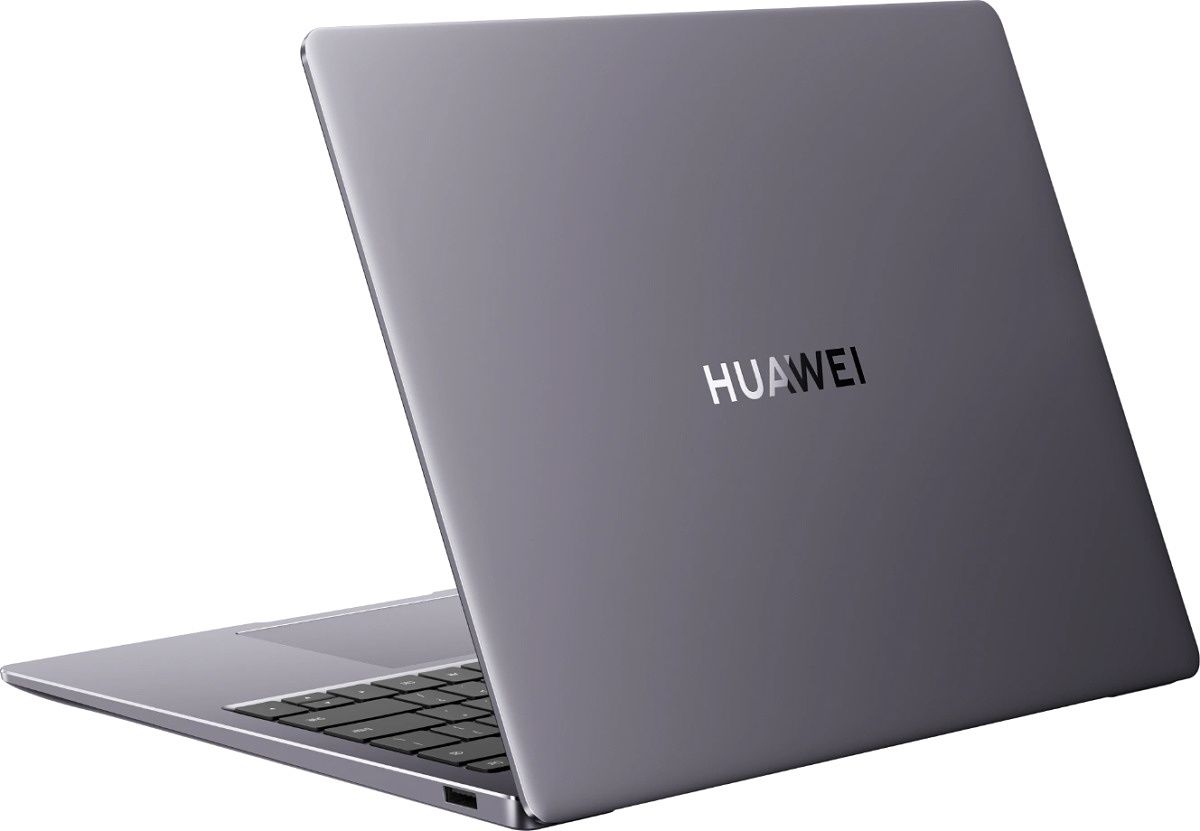
Huawei Matebook 14s
The Huawei MateBook 14s offers a large 3:2 90Hz display with a 90% screen-to-body ratio, a premium build, and more.

